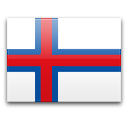More details
The Faroe Islands (; Faroese: Føroyar pronounced [ˈfœɹjaɹ]; Danish: Færøerne, pronounced [ˈfæɐ̯øːˀɐnə]), also called the Faeroes, is an archipelago between the Norwegian Sea and the North Atlantic, about halfway between Norway and Iceland, 320 kilometres (200 miles) north-northwest of Scotland. The Islands are an autonomous country within the Kingdom of Denmark. Its area is about 1,400 square kilometres (541 square miles) with a population of 50,030 in April 2017.
The land of the Faeroes is rugged, and these islands have a subpolar oceanic climate (Cfc): windy, wet, cloudy, and cool. Despite this island group's northerly latitude, temperatures average above freezing throughout the year because of the Gulf Stream.
Between 1035 and 1814, the Faeroes were part of the Hereditary Kingdom of Norway. In 1814, the Treaty of Kiel granted Denmark control over the islands, along with two other Norwegian island possessions: Greenland and Iceland. The Faroe Islands have been a ...
self-governing country within the Kingdom of Denmark since 1948. The Faroese have control of most domestic matters. Areas that remain the responsibility of Denmark include military defence, the police department, the justice department, currency, and foreign affairs. However, as they are not part of the same customs area as Denmark, the Faroe Islands have an independent trade policy, and can establish trade agreements with other states. The islands also have representation in the Nordic Council as members of the Danish delegation. The people of the Faroe Islands also compete as a national team in certain sports.
Source: wikipedia


